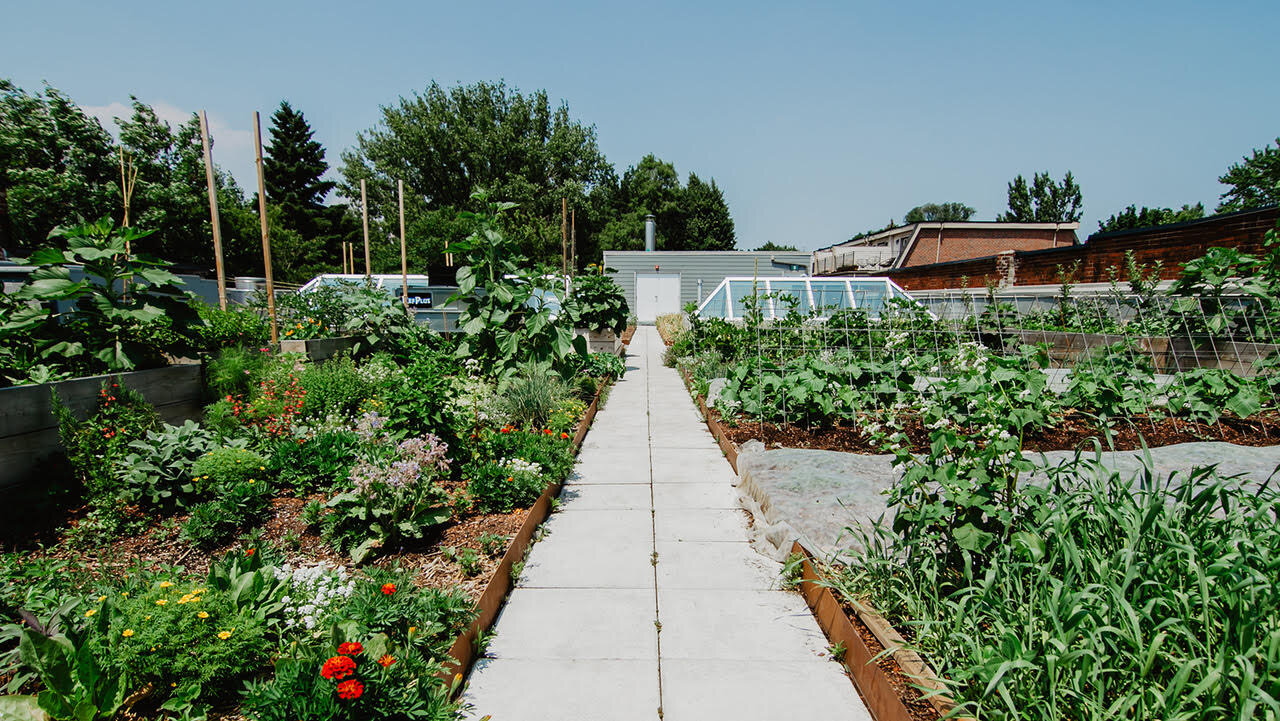
Case Study
How Avling Kitchen + Brewery is Debunking Myths About The Cost of Sourcing Local Food in their Menu Design
Rethinking menu design and costing analysis
to maintain or improve margins by
sourcing local seasonal ingredients
Avling Kitchen + Brewery is a brewery located in Toronto, ON that aims to create exceptional and experimental beer, food, and experiences that showcase Canadian flavours and locally farmed ingredients. They have a rooftop garden and onsite restaurant serving seasonal comfort food.
GFV Financial’s mandate is to provide actionable business intelligence for breweries, bakeries and restaurants. They use AI driven data extraction to produce detailed financial records that are supported by invoice line item detail. This allows them to track pricing and provide comprehensive back office reporting. They are based in Toronto, ON.
Feast On® is a certification program that recognizes businesses committed to sourcing and celebrating Ontario grown food & drink through proven and verified procurement practices. It contributes to growth and resilience of the local food movement through education, outreach, communication, impact measurement and reporting.
THE CHALLENGE
Avling Kitchen + Brewery has been hit hard by the closures imposed during the COVID-19 pandemic. Faced with costly new safety regulations and overall uncertainty about the industry’s short and medium term outlook, they are looking for solutions. They are looking for ways to rework their business model and menu to keep their business running sustainably, while still adhering to their core values of sourcing locally.
“[Sourcing local is] part of a longer strategy. A decision we made to try to reinforce a broader set of brand goals, a mission and a purpose… putting a few restrictions on ourselves forces [us] to be a bit more creative.”
—Max Meighen, Owner, Avling Kitchen + Brewery
Margins for approachable, mid-market restaurants like Avling Kitchen + Brewery are typically pretty thin which can make incorporating local ingredients a challenge. Communicating the value of local food to customers provides a different challenge. On a micro level, customers love knowing that the ingredients are coming from right down the road but keeping their attention to talk about some of the bigger picture issues is much more difficult. The broader issues like, sustainability, biodiversity, food access, food justice, food security, food fraud, local food culture, and supporting the economy don’t lend themselves to a table side conversation. They are important, and not simply to justify higher menu prices that reflect the true cost of the meal.
Max feels strongly that there is a need for customers and chefs to better understand some of the realities of farming, availability, and seasonality that comes with sourcing locally. Doing so, he feels, holds huge value. When you can better understand what grows or is produced in your region it is a discovery into new experiences, new tastes, new varieties, and also a discovery into how to work with and celebrate those ingredients.
“Communicating the extra value that people are getting when local ingredients are incorporated into a mid-range restaurant can be difficult. People are more receptive and interested in fine dining settings. It’s not expected in a place like this so I think it’s a little harder to open people’s eyes to it. But that’s changing.”
—Max Meighen, Owner, Avling Kitchen + Brewery
Given the uncertainty, Avling is asking themselves: How can sourcing and using local ingredients be incorporated successfully into a menu to support a sustainable business model? What does a locally sourced menu look like within the constraints of limited dining capacity and reduced purchasing power?

THE SOLUTION
Avling is bringing a local focused menu to a mid-market dining experience, which is sort of novel. In that model they don’t see the viability of using exclusively local ingredients for a variety of reasons, but instead focus on those that could have the greatest impact. So far they have had great success with this strategy and are hoping to find new ways forward.
In this case, they tackled this challenge from two different, yet converging, angles:
First they sought to drill down into the numbers specifically around their local food procurement and their menu design. With more clarity on this, they were able to keep their focus on locally sourced ingredients while better understanding how to operate within the new financial constraints brought on by the COVID-19 pandemic;
Second they leveraged the Feast On® network and brand to help communicate to their customers the value added from sourcing locally.
THEIR APPROACH
Take a data centric approach to procurement and menu design
Conduct an audit on their local food procurement practices
Use the data to achieve the Feast On ® Certification
Leverage the Feast On® brand to reaffirm and communicate with customers
TAKING ACTION
“One challenge that I think is an essential one is just deciding: How far are you going to go with it? How strict are you going to be? And if you are going to do local sourcing, where are you going to get those ingredients from?”
—Max Meighen, Owner, Avling Kitchen + Brewery
There is no single solution in any scenario, but the team at Avling is working closely with GFV Financial to fine tune their menu and purchasing habits so that they can remain profitable. The goal is to ensure that Avling has the financial capital to weather the uncertainties of the current economic climate.
Crucial aspects of this plan include:
Understanding purchasing behaviours and menu costs;
Working with a like-minded network of purveyors.
“When Avling came to us for help with adapting to the new economic climate we were happy to support a data focused analysis of their Cost of Goods spending and menu make up without compromising their principles of
local sourcing.”
—Evan Verburg, Founder & Lead Developer, GFV Financial
Often there is a myth that sourcing locally is more expensive and out of reach for typical or mid-range food service operations. At the Culinary Tourism Alliance and GFV Financial, we often get asked this question so we decided to put together a basic costing exercise that considers average prices for a common menu item in various scenarios where certain ingredients are sourced locally from Ontario.
Menu costing is a balancing act between the ingredient cost, portion size, and ease of execution to achieve the desired level of overall taste/impression (Figure 1). You can stretch or compress each of these three inputs, but you must keep in mind that each has an effect on the dish, and often, on each other. For example, You can reduce ingredient costs by making your own components. This will shrink your product cost but stretch your execution times and impact your labour costs.
FIG 1.0 Balancing act of menu costing
There isn’t a hard and fast rule, or ideal shape, for a single plate. The recipe must be arrived at based on analysis and appropriate data. You need to balance the cost of your desired ingredients with the portion size and execution both in prep and on the line.
Having access to proper purchase costs and accurate recipes, anchors this exercise in facts. This enables you to reach out to your network of suppliers and really pick and choose where you want to spend your money. The analysis helps you understand where you will get better returns and allows you to decide how you want the plate to reflect your restaurant.

COSTING INGREDIENTS
With all this in mind, we decided to dig into our data to derive average ingredient costs, then made comparisons by swapping out certain ingredients for average prices of locally sourced, Ontario grown & raised ingredients. To run this comparison, we chose a typical menu item found at a mid-range restaurant, a standard beef burger, and built it out four possible scenarios:
A standard burger using ingredients sourced from across Canada & the US
Replacing just the meat in the burger with 100% Ontario grown & raised beef
Replacing just the toppings made with 100% Ontario produce & cheese
Replacing everything (minus the bun) with 100% Ontario produce and beef
ASSUMPTIONS
In order to run our model we had to make some basic assumptions:
The quality of each ingredient is the same; they are a straight one for one substitution. This doesn’t account for other cost factors linked to quality such as shrinkage, cook time, food waste, or potential premium pricing strategies.
Our two burgers must use the same workflow. That is we assume that the process for making each burger is the same. This retains the same labour model for each burger. There is essentially no change, from a labour perspective, for each burger.
The menu price of the burger is set at $15 for both burgers to demonstrate comparable margins. (Not an average but a typical price point).
Pricing is based on industry averages of aggregate data across the GFV Financial platform with the exception of the Ontario ground beef which is an average price from available suppliers.
FOUR SCENARIOS
Scenario 1: Standard Beef Burger
In this scenario we explore the Cost of Goods for a standard burger using the average cost of ingredients sourced from across Canada or the United States. This is our benchmark scenario.
Scenario 2: Ontario Beef Burger
This scenario takes the numbers for Scenario 1 and replaces the most expensive aspect of the burger, the ground beef, with Ontario grown & raised beef.
Scenario 3: Ontario Toppings Burger
This scenario takes the numbers for Scenario 1 and replaces the toppings with Ontario produce (lettuce & tomato) and cheese.
Scenario 4: All Ontario Burger
This scenario takes the numbers for Scenario 1 and replaces both the ground beef and the toppings with Ontario product. Too little data was available to swap out the bun.

KEY FINDINGS
ARE LOCAL INGREDIENTS
MORE EXPENSIVE?
Based on our analysis, the cost of Ontario grown and raised ingredients for this burger recipe is slightly higher than the average cost. When the beef patty is swapped out, the gross profit on the Standard Beef Burger is $0.07 higher than for the Ontario Beef Burger. When the toppings are swapped out, the gross profit on the Standard Beef Burger is $0.44 higher than for the Ontario Toppings Burger. When all the ingredients (minus the bun) are swapped out, the gross profit on the Standard Beef Burger is $0.52 higher than for the All Ontario Burger.
Figure 2: Profitability of a $15 Burger by Recipe
What this analysis also showed us is that using local ingredients doesn’t necessarily mean that your prices can’t remain competitive. When we consider how marginal the cost differential is, it appears that using local ingredients could provide more flexibility within your pricing strategy since consumers are often willing to pay higher prices if they know that their dollars are going back into their local economy, and supporting their local farmers.
“Why are people willing to pay more? Why has it worked and sort of taken over?... there is an interest in the idea of a local product. It’s a community space. It is an affordable luxury.”
—Max Meighen, Owner, Avling Kitchen + Brewery
WHICH INGREDIENTS SHOULD YOU SWAP OUT TO MAKE THE BIGGEST IMPACT?
“There are many great reasons for wanting to support local food systems. The most obvious and tangible way to begin measuring your impact is by tracking and tracing your annual spend on local food and beverages.”
—Valerie Keast, Director of Business Development, Culinary Tourism Alliance
Measuring impact can be interpreted in many ways depending on your businesses priorities, values, and capacities. Here are some ways, related to this case, that you could interpret this question:
Financial:
Choose the option with the smallest difference in gross profit at your current menu price. In our case, this would be Scenario 2: ON Beef;
Choose the option that could earn the higher price premiums and/or highest gross profit. This depends on your restaurant's pricing strategy. See Table 1 for examples;
Economic / Social: Choose to swap out the ingredients that can put more $ back into your local community and/or help support social causes. One way to assess this is by looking at the $ or % of cost within your recipe, as illustrated in Scenario 4;
Ethical / Environmental: Swap out ingredients for ones that are produced according to certain ethical or environmental standards or that can help reduce the carbon footprint associated with food miles and delivery methods;
Taste & other qualities: Consider things like value added from freshness, unique varieties, and better flavour, as well as cost related things like shrinkage and cookability.

“[Local food is] an attempt to rethink what’s in your own backyard. Rethink what’s possible from the perspective of sustainability, fairness, regenerative practices, and think of it from the field right through to the plate - and try to be original in that way.”
— Max Meighen, Owner, Avling Kitchen + Brewery —
OUTCOMES
Running through the numbers helped Avling identify which items on their menu to keep and which ones to remove. Of those they kept, they were able to identify which ingredients were feasible to source locally in order to have a maximum impact for their customer in terms of quality and value.
“It’s come down to simplicity and making safe choices.
We are still able and happy to work with all our suppliers
from before but a restaurant such as ours, a brew pub,
it was difficult before to make risky choices in terms of what to put on the menu (certain things didn’t move very well,
certain things sold very well like our burger). I think we just
have to create a menu for a place our size that has
the sort of operating costs that we do. We have to
put out something that we know is gonna work. So I think it has taken a bit of the creativity out of things, but it hasn’t meant that we have to stop sourcing locally.”
—Max Meighen, Owner, Avling Kitchen + Brewery
This costing exercise revealed to us how challenging it can still be to source local ingredients such as ground beef and the need for a network of vetted local suppliers to facilitate this.
“Sourcing something as ubiquitous as ground beef became a challenge when looking for an Ontario product. Most meat purveyors offer blended “Canadian” ground beef as an option. We did not have any Ontario-only ground beef suppliers in our system and turned to Feast On® purveyor network to help develop a costing model.”
—Rob Farrelly, Founder, GFV Financial
It also raised important questions on how the seasonality of sourcing local ingredients can be factored into menu design given that some ingredients can not always be sourced locally year round, like lettuce and tomatoes for example.
“Variety, supply chain, and consistency, to a degree are a challenge. I think as more and more small farmers get back into the game, that won’t be as much of a problem...And another challenge is getting people more comfortable with more change in season, that sort of brings certain items in and out of availability. It’s just letting people know that one day something will be there, and one day it is not.”
—Max Meighen, Owner, Avling Kitchen + Brewery
CONCLUSIONS
Even through uncertain and challenging economic times, sourcing locally is still an option for mid-range restaurants. With the right information, and a strong network of local suppliers, you don’t have to choose between profitability, quality, and supporting the development of a strong and resilient local food system. Important take-aways from this case are:
Ontario products are world class ingredients that are available at competitive prices. Using local ingredients appears to be marginally more expensive than average costs, but remain economically viable and can provide more flexibility in your pricing strategy;
It is possible to use all Ontario ingredients on a burger with no changes to workflow or incurring additional labour costs etc;
Finding local ingredients can still be a challenge, reminding us of the necessity from programs like Feast On® to help identify local purveyors and make those connections for chefs.
Analysing the right information leads you to more informed choices about your procurement practices and the sustainability of your business model. Knowing the % of local food on your menu and building strong connections with local suppliers, helps you better tell your story to consumers. It helps you measure the impact you are having in supporting sustainable local food systems and can even help your business be more profitable.
“For most restaurants that apply to become Feast On ® certified it is the first time that they do an analysis like this on their local food procurement practices. Seeing it all down on paper helps them put things in perspective and is a useful starting point for having these discussions, and making these important decisions.”
—Valerie Keast, Director of Business Development, Culinary Tourism Alliance

Where do the numbers come from?
For this exercise, GFV Financial used anonymized, aggregate data from across their network to generate average pricing for each of the ingredients used. This included both local Ontario and imported products. The exception is Ontario ground beef, which is only available at a handful of vendors. The price for Ontario ground beef is a direct price quote from Feast On® purveyor.
Why was the Feast On® program developed?
Feast On® was started as a grassroots movement within the foodservice industry, with support for development from the Ontario Ministry of Agriculture, Food and Rural Affairs (OMAFRA) in 2013. The definition of ‘local food’ used aligns with that of Foodland Ontario. The program’s vision aligns with those of the Local Food Act, 2013, S.O. 2013, c. 7. Feast On® is designed to help strengthen connections across the food tourism value chain and help consumers identify restaurants that utilize and showcase Ontario grown & raised ingredients.



